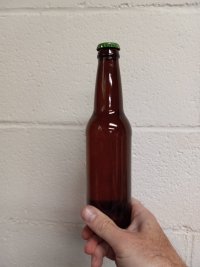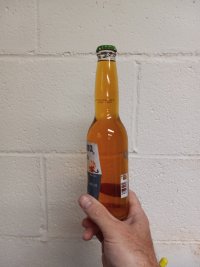Hey all, I have been having issues with oxidized beer. Like almost every time I brew. And with multiple styles: IPAs, pale ales, and even a Saison. Only one I couldnt tell was a stout. I have been trying to use the best low-oxygen process (that I am able to). Here is a look at my general process post-boil:
Ferment in a plastic bucket with gasket-sealed lid using a three-piece airlock filled with sanitizer. If I dry-hop I either use magnets to drop it in or put it in during active fermentation. I let it ferment for 1-2 weeks (usually only 5-7 days) and then bottle. I have a spigot with bottling wand directly attached with a short piece of tube. I crack the lid and gently fermenter prime (I have started adding some sodium metabisulfite too). Then I fill close to the top and immediately cap with oxygen-absorbing caps. The beer is oxidized within 2-3 weeks after bottling (which is usually how long it takes to condition ).
).
It is frustrating enough that I am about to quit homebrewing. Any ideas would be greatly appreciated!
Ferment in a plastic bucket with gasket-sealed lid using a three-piece airlock filled with sanitizer. If I dry-hop I either use magnets to drop it in or put it in during active fermentation. I let it ferment for 1-2 weeks (usually only 5-7 days) and then bottle. I have a spigot with bottling wand directly attached with a short piece of tube. I crack the lid and gently fermenter prime (I have started adding some sodium metabisulfite too). Then I fill close to the top and immediately cap with oxygen-absorbing caps. The beer is oxidized within 2-3 weeks after bottling (which is usually how long it takes to condition
It is frustrating enough that I am about to quit homebrewing. Any ideas would be greatly appreciated!






